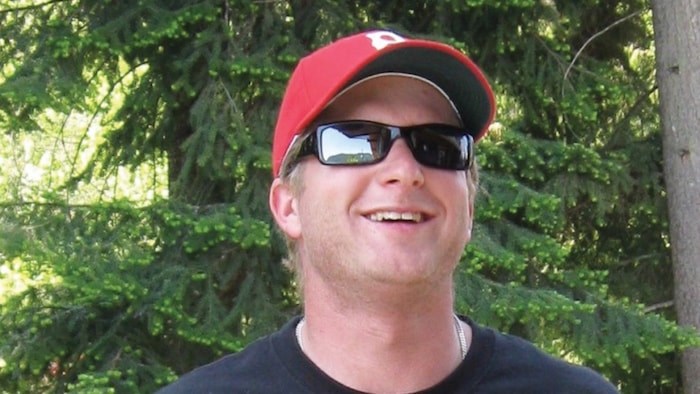The third day of the inquest into the death of Myles Gray, April 19, included the testimony from Constables Kory Folkestad and Eric Birzneck, the next two Vancouver Police Department (VPD) officers to arrive on the scene after Const. Hardeep Sahota (who testified on the second day of the inquest).
Gray was a 33-year-old Sechelt business man making deliveries on Aug. 13, 2015, in Burnaby when police were called about a dispute between Gray and a resident. After a confrontation with at least seven police officers, Gray died at the scene.
Both Folkestad and Birzneck were in plain clothes (not wearing a police uniform, but carrying badges and equipment) on Aug. 13, and questions from counsel and jurors included when and how they identified themselves as police officers to Gray.
It was Birzneck, who is now a use-of-force instructor and was a patrol officer trained in crisis negotiation in 2015, who made the radio call about a plan to hobble Gray. He testified that he did not have a hobble with him, and the call was to other units as a request to bring one, but that he doesn’t know who place it. Birzneck said he was charged by Gray, so he used OC spray (pepper spray) and described two attempts to put Gray in a vascular neck restraint during the struggle to handcuff him. A vascular neck restraint (or VNR) uses pressure to reduce blood flow and force a temporary loss of consciousness. Once handcuffs were placed, Birzneck said he walked down the stairs, out of view, then returned as another officer was performing CPR on Gray. In response to questioning, Birzneck said he did not see blood or bruising on Gray, but said his face was red.
When asked, Birzneck said they could not disengage from Gray because of the threat he posed to the public and to himself.
Both Birzneck and Folkestad described Gray’s strength that day. Folkestad testified that he struck Gray in the face several times as hard as he could, and was knocked out after Gray punched him. He said he was diagnosed with PTSD after the incident and has “significant life-changing injuries” that he continues to experience. Folkestad said he thinks body cameras would be effective, and would have been able to help paint the picture of Gray’s behaviour and strength.
Const. J. Wong’s testimony was rescheduled to the following day. Ten more constables are also scheduled to be witnesses during the inquest.
The BC Coroners inquest is scheduled for 10 days between April 17 and 28, with a witness list of more than 40 people.




